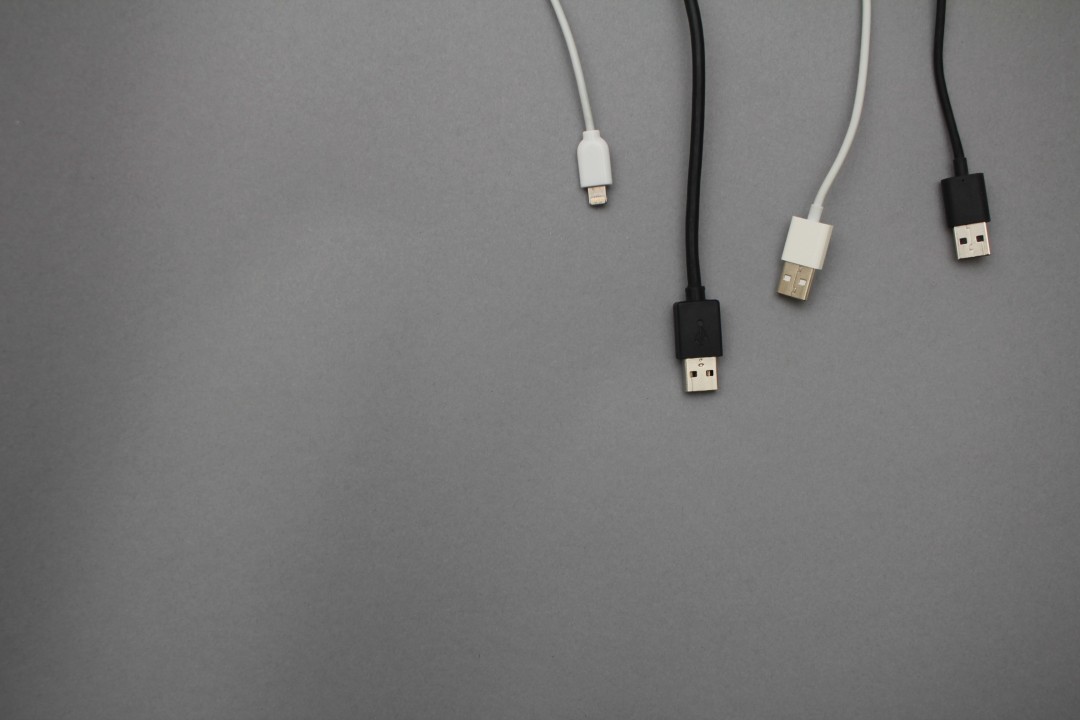How to Charge a Battery Without a Charger
To charge a battery without a charger, use a compatible power source or a USB cable. You can also harvest energy from solar panels or hand-crank generators.
In situations where you don’t have access to a charger, knowing alternative methods to charge your battery can be extremely helpful. By utilizing different power sources such as USB cables, solar panels, or hand-crank generators, you can ensure that your devices remain charged even in challenging circumstances.
These alternative methods provide a sustainable way to keep your battery powered up when traditional chargers are not available. Additionally, being prepared with these charging options can be beneficial during emergencies or outdoor activities where access to a power outlet is limited. By following these simple steps, you can effectively charge your battery without the need for a traditional charger.

Credit: www.wikihow.com
Using Common Household Items
In emergency situations, it’s possible to charge a battery without a charger using common household items. These methods can be a lifesaver in situations where a charger is unavailable. Let’s explore some unconventional yet effective ways to get your battery charged using items you probably have at home.
Using A Potato
If you have a potato and some copper wire on hand, you can create a makeshift battery. Insert a copper wire and a galvanized nail into the potato, connecting the negative and positive terminals of the battery to each other. The potato’s acidic contents act as an electrolyte, generating a low level of power. This can be used to power small devices in emergencies.
Using Vinegar And Baking Soda
Vinegar and baking soda can be used to create a chemical reaction that can generate a small amount of electricity. Create a solution by mixing vinegar and baking soda. Then, use two different types of metal, such as copper and aluminum, and connect each to the positive and negative terminals. The reaction between the metals and the solution can produce a small amount of electric charge. However, caution should be exercised when handling these substances.
Harnessing Solar Power
Harnessing solar power to charge a battery without a charger is an efficient and eco-friendly solution. By utilizing solar panels, you can convert sunlight into energy to power your battery, providing a renewable source of electricity.
Harnessing Solar Power H3> Using Solar Panels Harness solar power by placing solar panels under direct sunlight for charging. Connect the battery to the solar panel using a compatible connector. H3> Improvising with Reflective Surfaces Utilize reflective surfaces like mirrors or aluminum foil to amplify sunlight onto the battery for effective charging.Utilizing Alternative Power Sources
Using A Wind Turbine
Set up a wind turbine to harness wind energy that can be converted into electricity.
Position the wind turbine in an area with consistent wind flow for optimal power generation.
Connect the turbine to a battery using a charge controller to regulate the power flow.
Using A Dynamo
Employ a dynamo to generate electricity by rotating a magnetic field within a coil of wire.
Attach the dynamo to a bicycle wheel or another rotating object for power generation.
Connect the dynamo output to a voltage regulator before charging your battery.
Emergency Charging Techniques
When you find yourself in a pinch without a charger, you can still charge a battery using emergency techniques. Methods such as using a power bank, solar charger, or a USB car charger can be effective solutions for charging a battery without a traditional charger.
These techniques can be a lifesaver in unexpected situations.
Emergency Charging Techniques In dire situations, when you find yourself without a charger for your battery, there are alternative methods you can use to power up your device. Whether you’re on the go or in an emergency situation, the following techniques can help you out.Using A Car Battery
If you find yourself with a dead battery and in possession of a car, you can use the car’s battery to charge your device. Begin by turning on the car engine and then connecting your device to the car battery using a car charger or a power inverter. Make sure to use a proper adapter to avoid damaging your device.Using A Power Bank
Another option for emergency charging is to use a power bank. These portable chargers come in various capacities and can be a lifesaver in times of need. Simply connect your device to the power bank using the appropriate charging cable and let it charge. Ensure the power bank is fully charged beforehand for maximum effectiveness. By knowing these emergency charging techniques, you can ensure that you’re never left without a powered-up device in critical moments.Tips And Precautions
To charge a battery without a charger, you can use a car battery or a solar panel as alternative power sources. It is important to follow safety precautions and ensure proper connections are made to avoid any accidents during the charging process.
Remember to monitor the battery closely throughout the charging period to prevent overcharging.
Ensuring Safety
Charging a battery without a charger is not the ideal scenario. However, if you find yourself in a situation where you don’t have access to a charger, there are a few tips and precautions you can follow to ensure safety. It’s important to note that although these methods can work in emergency situations, they may not provide the same level of efficiency or longevity as using a proper charger.1. Use the Correct Voltage
When charging a battery without a charger, it’s crucial to use the correct voltage. Using voltage that is too high can lead to overheating and potentially cause damage to the battery. On the other hand, using voltage that is too low may not provide enough power to charge the battery properly. Refer to the battery specifications or consult a professional to determine the appropriate voltage.2. Avoid Overcharging
Overcharging can be detrimental to a battery’s health and may even lead to safety hazards such as leaking or bursting. To prevent overcharging, keep a close eye on the charging process. Once the battery reaches its full capacity, disconnect the power source immediately.3. Keep an Eye on the Temperature
During the charging process, monitor the temperature of the battery. Excessive heat can cause damage and reduce the lifespan of the battery. If you notice the battery getting too hot, stop the charging process and allow it to cool down before proceeding.4. Utilize a Timer
To avoid the risk of leaving the battery connected to a power source for too long, consider using a timer. Set the timer to the estimated charging time and make sure to disconnect the battery once the time is up. This will help prevent overcharging and unnecessary strain on the battery.5. Choose a Safe Location
When charging a battery without a charger, always choose a safe and well-ventilated location. Charging batteries can generate flammable gases, so it’s important to avoid charging them near any potential sources of ignition. Additionally, ensure that the charging area is free from any clutter or obstructions that may interfere with the charging process.Optimizing Efficiency
While charging a battery without a charger may not yield the most efficient results, there are a few steps you can take to optimize the charging process. By following these tips, you can help ensure that the battery charges as effectively as possible.1. Clean the Battery Terminals
Before charging the battery, inspect the terminals for any dirt, corrosion, or debris. Clean the terminals using a soft cloth or a brush specifically designed for battery terminal cleaning. This will enhance the electrical connection and improve the charging efficiency.2. Use the Right Power Source
Selecting the right power source is crucial for efficient charging. If possible, choose a power source that matches the battery’s voltage and current requirements. Using a power source with incompatible specifications can result in slower charging or insufficient power supply.3. Opt for Slow and Steady Charging
While it may be tempting to charge the battery quickly, opting for a slow and steady charging process is often more effective. Rapid charging can generate excessive heat and stress the battery, potentially reducing its lifespan. Therefore, it’s recommended to choose a low current setting if available or use a power source that delivers a lower charging current.4. Monitor the Charging Process
Throughout the charging process, keep a close eye on the battery’s progress. Check for any signs of overheating or abnormal behavior. If you notice any issues, immediately disconnect the power source and assess the situation. Monitoring the charging process allows you to intervene quickly and prevent any potential problems.5. Determine an Appropriate Charging Time
It’s important to have a general understanding of the battery’s charging time. While this may vary depending on the battery type and capacity, estimating a reasonable charging duration can help avoid unnecessary overcharging. Refer to the manufacturer’s recommendations or consult a professional if necessary. In conclusion, charging a battery without a charger should only be considered as a temporary solution. Following these tips and taking necessary precautions can help minimize risks and optimize the charging process. Nonetheless, it’s always advisable to obtain a proper charger for prolonged battery health and performance.
Credit: m.youtube.com

Credit: www.linkedin.com
Frequently Asked Questions Of How To Charge A Battery Without A Charger
How Can I Charge My Battery Without A Battery Charger?
To charge a battery without a battery charger, you can use a car’s alternator or a portable jump starter.
Is It Possible To Charge Without A Charger?
Yes, it is possible to charge without a charger using alternative methods like wireless charging pads, power banks, or USB ports.
How Can I Charge My Aa Battery Without A Charger?
To charge an AA battery without a charger, you can use alternative methods such as a USB port or a power bank. Connect the battery to the USB port or use a USB-to-battery adapter to charge it. Another option is using a power bank with a battery adapter to charge your AA battery.
How Do You Revive A Dead Aa Battery?
To revive a dead AA battery, you can try the following steps: 1) Clean the battery contacts with a cotton swab and vinegar. 2) Place the battery in a freezer for a few hours. 3) Use a battery reconditioner or charger to slowly recharge the battery.
4) If all else fails, it’s best to replace the battery.
Can You Charge A Battery Without A Charger?
Yes, it is possible to charge a battery without a charger using alternative methods that we will explain in this article.
What Are Some Alternative Ways To Charge A Battery?
Some alternative ways to charge a battery include using a solar panel, a 12-volt charger, a car battery, or a power bank.
How Can You Charge A Battery With A Solar Panel?
To charge a battery with a solar panel, you need to connect the panel to a charge controller, which will regulate the charging process and prevent overcharging.
Conclusion
Knowing how to charge a battery without a charger can be a valuable skill in certain situations. Whether using alternative power sources or improvising with household items, there are several methods to explore. By being resourceful and creative, you can keep your devices powered even without a traditional charger.
Always prioritize safety and ensure compatibility when using unconventional charging methods.


